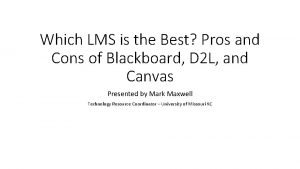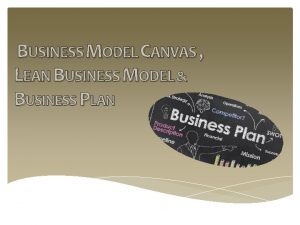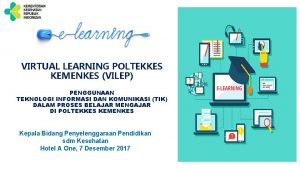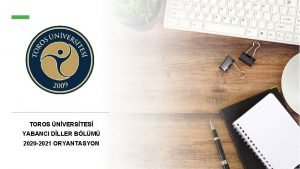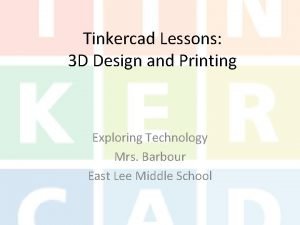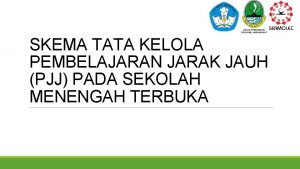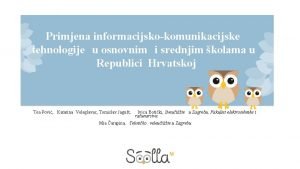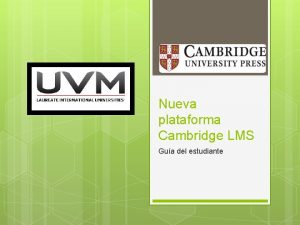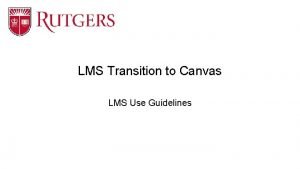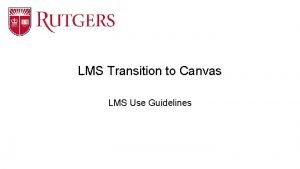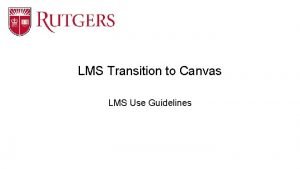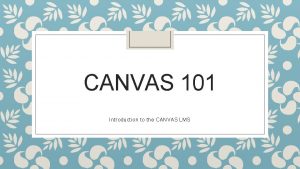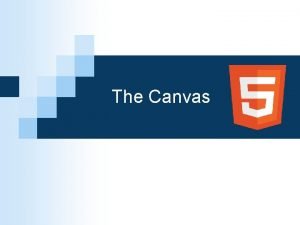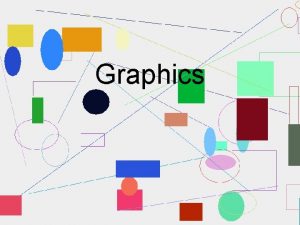LMS Transition to Canvas NonInstructional Use LMS Use









- Slides: 9

LMS Transition to Canvas Non-Instructional Use

LMS Use Guidelines Objective • Identify Non-Instructional use of current LMSs to determine alternative solutions to support Deliverable • Matrix of Non-Instructional Uses of current LMS and available alternative solutions • Common Glossary of Terms and Definitions Problem Statement • As a matter of convenience, experience and lack of solutions, the LMS morphed to support business practices and non-instructional uses. The LMS, however, may not be the best use or most appropriate technology to achieve the need. LMS Transition – Non-Instructional 2

Non-Instructional Uses – Identified / Surveyed Use Case Description Functionality Examples Solutions Repository Storage space for shared files or archives File storage, organization, sharing, version control Departmental shares Archives One. Drive, BOX, Sharepoint Personal projects/research Individual research or projects undertaking, requiring some collaboration File storage, organization and sharing Timelines, “syllabus”, tasks e-portfolios for students* (should be part of LMS) As a part of course work, Students maintain a portfolio of experiences, documents, media, etc. Content management Assessments e-portfolio for faculty Faculty portfolio of work Portfolium Training/continuing education* Voting Qualtrics Organizational Management Managing, administering and collaborating within a department or unit IT Project Websites Repository for IT Work efforts LMS Transition – Non-Instructional TEAMS Content management, collaboration, scheduling, communications TEAMS, Sharepoint, Smartsheets 3

Non-Instructional Uses – Identified / Surveyed Use Case Description Functionality Examples Solutions Chat/video conferencing (adobe connect) Remote virtual meetings and collaboration Screen share, conference calling, video confererncing Web. Ex, Skype, TEAMS Placement Testing Student assessment tests for determine appropriate enrollments Quiz, tests, survey, data analysis, submissions Qualtrics Electronic Annual Report SCORM Content Faculty reappointments & promotion Mediation Guidelines Performance/course evaluation Developing working prototypes for software application designs LMS Transition – Non-Instructional 4

Non-Instructional Uses – Identified / Surveyed Use Case Description Functionality Examples Solutions Compliance and Ethics Training Yearly training on compliance and ethics mandates and policies Certification, Tracking, Expirations Harassment Training PHI / HIPAA Title IX Code of Conduct External vendor programs Student Project Sites Repository for individual student work efforts Research Sites Repository for research related activities Syllabi Repository for quick access to syllabus information MOOC Compliance Training Tenure Tracking and promotion Faculty Forums RU Core Reporting LMS Transition – Non-Instructional 5

Non Traditional Use - Considerations / Discussion Points ü How does a requestor decide on a solution for their need? • ü Is training available for the alternate solutions? • • ü Available training will depend on the solution selected. Many of the existing solutions at the University will have some form of self-paced training or by request, customized training for a larger audience In agreeing to a possible solution, the solution provider will need to evaluate the impact on resources and staff What migration resources will be made available or required? • • ü Through the efforts of this committee, the intent is to develop a matrix of common use cases and recommended solutions. IT staff can / should be consulted to understand requirements and to identify the most appropriate solution available. Each solution that will be utilized will provide the technical resources and direction necessary to help migrate content if possible In agreeing to a possible solution, the solution provider will need to evaluate the impact on resources and staff How will support be provided for the solutions? • Each solution will need to determine the Service Level Objectives and scope of support that can be provided in conjunction with end-users or departments LMS Transition – Non-Instructional 6

Non Traditional Use - Considerations / Discussion Points • ü Are there specific compliance or security concerns? What are the audiences or users of the site (internal, students, guests, visitors)? • • The audiences will vary by use case and could include both internal and external. Considerations should be made for: • Obtaining valid login credentials • Security and compliance concerns How wide spread is the use of a particular site / functionality? LMS Transition – Non-Instructional 7

Guidelines for Non-Instructional Use Cases • • • LMS (Canvas) is designed as “best of breed” in delivery of instructional content. For noninstructional use cases there will be solutions better suited to provide the functionality and features required In agreeing to a possible solution, the solution provider will need to evaluate the impact on resources and staff in order to provide suitable service IT staff can / should be consulted to understand requirements and to identify the most appropriate solution available LMS Transition – Non-Instructional 8

Next Steps • • Meeting cadence / communication Collaborative document editing Setting target dates for completion Steering Committee review LMS Transition – Non-Instructional 9

